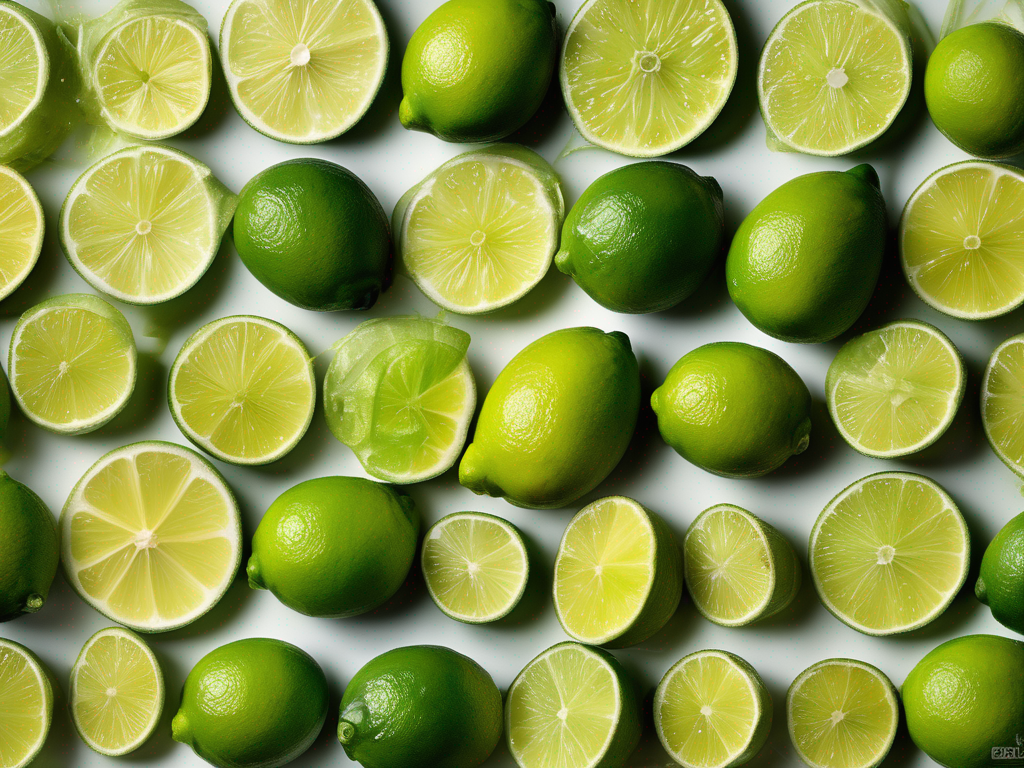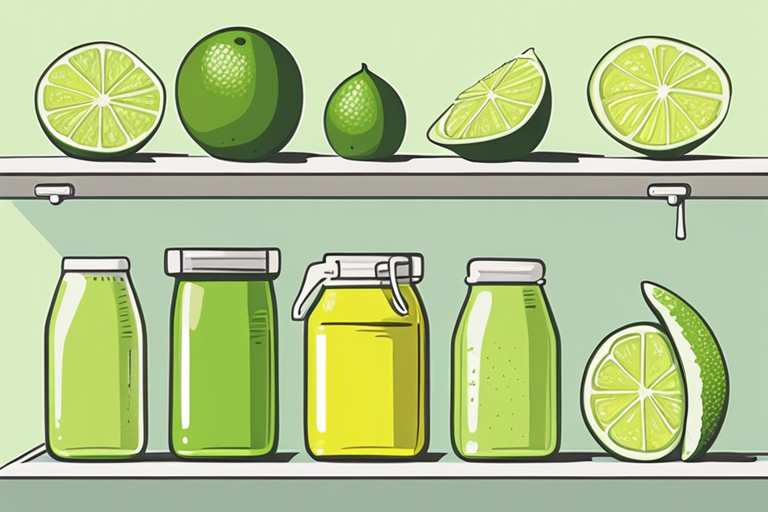
The Shelf Life of Fresh Lime Juice: Safety Tips and Storage Guidelines
Get Your Free Food Safety Cheat Sheet
30 most common foods with instant answers. Print it and stick it on your fridge—completely free!
The Shelf Life of Fresh Lime Juice: Safety Tips and Storage Guidelines
Fresh lime juice is a versatile ingredient that adds a tangy flavor to a wide range of dishes and beverages. Whether you're using it in cocktails, salad dressings, marinades, or sauces, it's essential to understand how to properly store fresh lime juice to ensure its quality and safety. In this blog post, we'll explore the shelf life of fresh lime juice, share practical tips for storage, and discuss important safety considerations. (Lime)
Understanding the Shelf Life of Fresh Lime Juice
Freshly squeezed lime juice contains natural enzymes and compounds that can degrade over time, affecting its flavor and quality. To maximize the shelf life of fresh lime juice, it's crucial to store it properly and use it within a certain timeframe. Here's what you need to know:
Factors Affecting Fresh Lime Juice Shelf Life
Several factors can impact the shelf life of fresh lime juice, including:
- Exposure to air: Oxygen can cause oxidation, leading to a decline in flavor and quality.
- Temperature: Storing lime juice at the right temperature is crucial to prevent spoilage.
- Light: Exposure to light can accelerate the degradation of lime juice.
- Contamination: Proper sanitation and hygiene practices are essential to prevent bacterial growth.
Storage Tips for Fresh Lime Juice
To prolong the shelf life of fresh lime juice and maintain its quality, follow these storage tips:
Refrigeration
- Store in a sealed container: Transfer fresh lime juice to a clean, airtight container to prevent exposure to air and contaminants.
- Refrigerate promptly: Place the sealed container of lime juice in the refrigerator immediately after juicing.
- Maintain a consistent temperature: Keep the lime juice refrigerated at a consistent temperature of 40°F (4°C) or below.
Freezing
- Use ice cube trays: Pour fresh lime juice into ice cube trays and freeze. Once frozen, transfer the lime juice cubes to a resealable freezer bag for easy portioning.
- Label and date: Remember to label the freezer bag with the date of freezing to track its freshness.
Safety Considerations for Fresh Lime Juice
Ensuring the safety of fresh lime juice is vital to prevent foodborne illnesses. Follow these safety guidelines when handling and storing lime juice:
- Wash limes thoroughly: Rinse limes under running water and scrub the skin with a brush to remove any dirt or contaminants.
- Use clean utensils: When juicing limes, use clean utensils and equipment to avoid contamination.
- Avoid cross-contamination: Keep lime juice away from raw meat, poultry, and seafood to prevent the spread of bacteria.
- Check for signs of spoilage: Discard any lime juice that shows signs of mold, discoloration, or off odors.
Conclusion
Fresh lime juice can add a burst of citrusy flavor to your culinary creations, but proper storage is key to maintaining its freshness and quality. By following the storage tips and safety guidelines outlined in this blog post, you can extend the shelf life of fresh lime juice and enjoy its zesty goodness for longer. Remember to refrigerate or freeze leftover lime juice promptly and always prioritize food safety in your kitchen.
Next time you reach for a lime to squeeze some fresh juice, keep these tips in mind to make the most of this vibrant ingredient!
For more information on limes and other food safety tips, visit our lime page. (Lime)
Related Posts
Here are some other articles you might find helpful:
- How Long Are Frozen Fruits Good For: A Comprehensive Guide
- How Long Does Frozen Fruit Last in the Freezer?
- ¿Puedo congelar las alitas de búfalo para mantenerlas frescas por más tiempo?
- Recetas creativas para aprovechar el pan brioche sobrante
- La mejor manera de almacenar las tortillas de maíz para prolongar su vida útil

Authoritative Food Safety References
These agencies and university labs inform every tip and health precaution we publish.
USDA FoodKeeper – Cold Storage Guidelines
Official refrigerator, freezer, and pantry timelines maintained by the U.S. Department of Agriculture.
Visit USDA FoodKeeperFDA Produce Safety Rule & Grower Guidance
Field-to-fridge handling practices that prevent contamination of fruits, vegetables, and leafy greens.
Visit FDA Produce SafetyCDC Foodborne Illness Prevention Hub
Surveillance-backed guidance on pathogens, symptoms, and steps to reduce foodborne illness risk.
Visit CDC Food SafetyUC Davis Postharvest Technology Center
University research detailing optimal storage atmospheres for produce after harvest.
Visit UC Davis PostharvestPenn State Extension – Home Food Preservation & Safety
Peer-reviewed extension bulletins on safe canning, chilling, and reheating practices.
Visit Penn State ExtensionHow long does fresh lime juice last in the refrigerator?
Can I freeze fresh lime juice for later use?
What are the signs that fresh lime juice has gone bad?
Can I store fresh lime juice at room temperature?
How can I extend the shelf life of fresh lime juice?
Get Your Free Food Safety Cheat Sheet
30 most common foods with instant answers. Print it and stick it on your fridge—completely free! Want more? Upgrade to the complete guide with 70+ foods.
Scan your food directly and get instant safety info using our AI-powered camera feature.